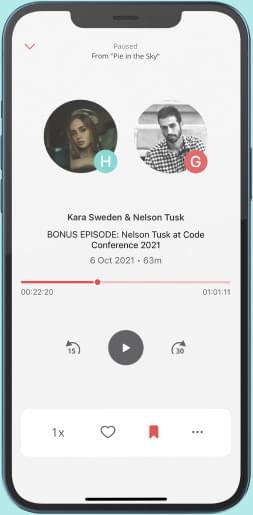
The Voice of Tomorrow: An Interview with Ron Jaworski - Part 2
“When we are listening to an audio file created by AI, we try to find where the machine got it from, but when we are listening because we just want to listen, we don't really care.” -- Ron Jaworski This episode’s the second half of my interview with Trinity Audio CEO and ad tech veteran Ron Jaworski as we talk about the future of proprietary AI voices, Ron’s vision for Trinity Audio, and some surprising statistics on just how effective sound can be when it comes to engagement. As always, if you have any questions for my guest, you’re welcome to reach out through the links in the show notes. If you have questions for me, just visit www.audiobrandingpodcast.com where you’ll find all sorts of ways to get in touch. Plus, subscribing to the newsletter (on the www.audiobrandingpodcast.com webpage) will let you know when the new podcasts are available. Building a Better AI The interview continues with a talk about such projects as the Open Voice Network, and their efforts to negotiate contracts that protect the intellectual property of voice artists whose voices become the template of future AI assistants. “We have enough examples of how we can go in the wrong direction,” Ron says, recalling the legal tangles that have often ensued, “that we can definitely use those examples to see how to build an AI assistant right this time.” He goes on to tell us about his driving vision for Trinity Audio: “we believe that basically, any type of textual content should have an audio version if it's relevant to be consumed in that manner." As he says, “we want to create the largest AI audio library in the world and deliver relevant content to listeners whenever they want to consume it.” Mechanical Voices Ron tells us about a test his company performed to see how well people could distinguish between human and AI voices. There was one catch, however. “The one thing that none of them knew was that all of the voices were mechanical voices,” he says, including the voices that the subjects had taken for granted as being human. “The human ear is becoming more and more tolerant to mechanical voices on one hand,” Ron explains, “and the AI solution's becoming much, much better than it was, and just getting better and better.” We go on to talk about how having audio and voice options for textual content can make a dramatic difference when it comes to online engagement. “We have one publication,” he says, “that we compared the engagement of users, and saw that a hundred times more of its subscribers tend to choose the audio solution than the general population.” Joining the Ride As we wrap up the interview, Ron tells us about the sense of excitement and optimism that surrounds the booming audio and voice industry. “It's a fruitful ground for innovation and for being creative,” he tells us. “The audio and voice group is getting bigger, and the fun part is that it feels like this group is moving forward together.” For anyone thinking about taking the plunge, he has this to say: “People that think about joining the voice and audio space, now it's a great time to join the ride.” Episode SummaryNegotiating and protecting voiceover rights when it comes to virtual assistantsHow the human ear distinguishes between human and artificial voicesEngagement numbers when it comes to utilizing voice and audio interfacesThe exciting future of voice, audio, and the virtual sound industry Connect with the Guest Website: <a href="https://www.trinityaudio.ai/" rel="noopener noreferrer"...
From "Audio Branding"




Comments
Add comment Feedback